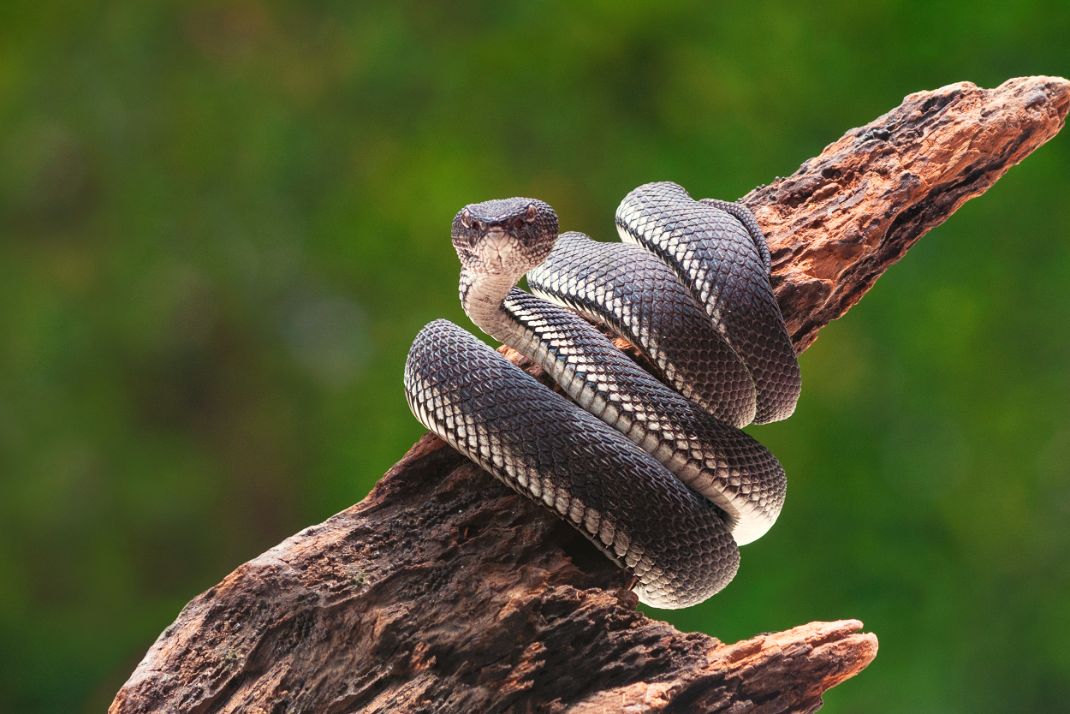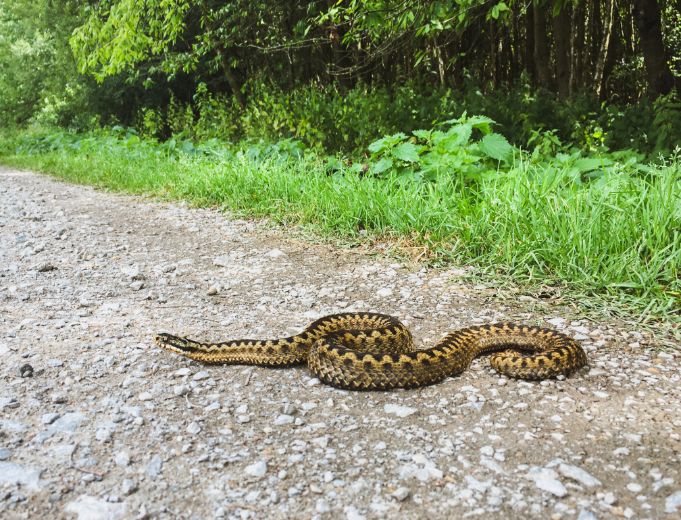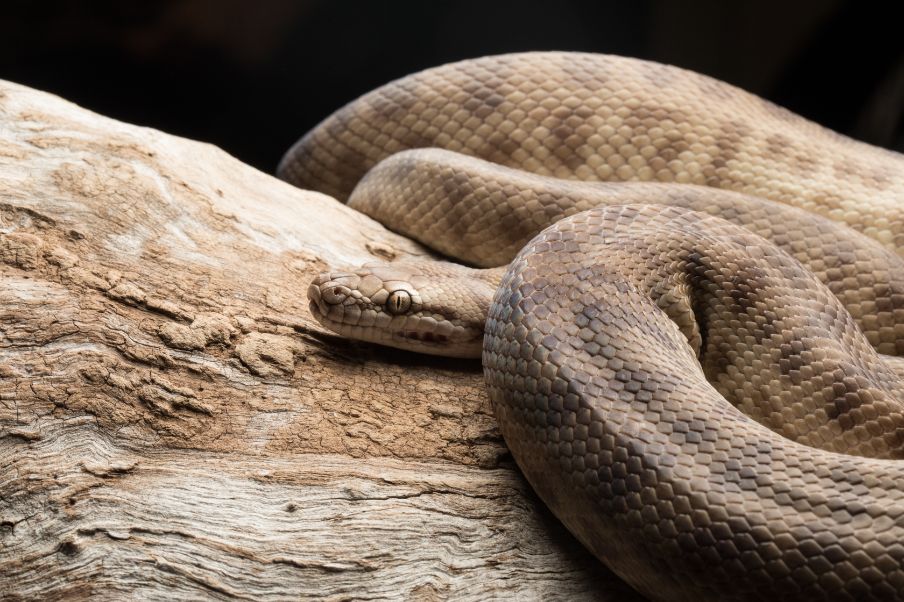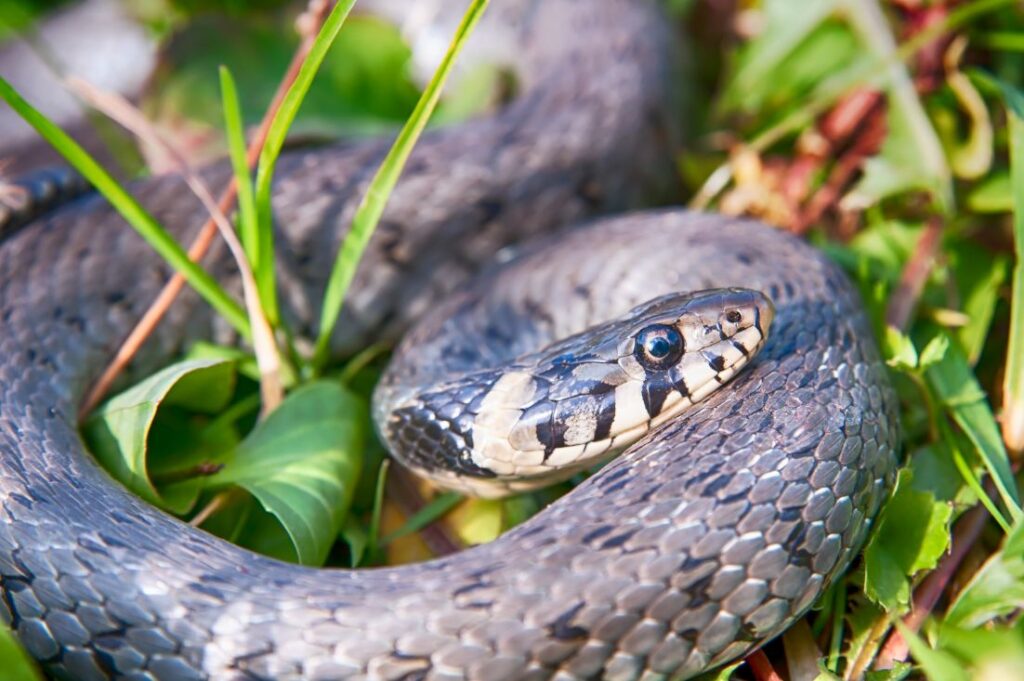Table of Contents
There’s no mistaking a snake’s graceful slither. It’s pretty much how these reptiles move around.
Snakes move so effortlessly that many people wonder if they actually have bones. The fact that these serpents have no limbs further fuels the notion that they may not have bones after all.
But how true are these assumptions? Do snakes have bones?
Those questions shall be the focus of this post.
Do Snakes Have Bones?
The answer is a resounding yes. Snakes do have bones, and lots of them.
Surprisingly, snakes have more bones than humans.
An adult human has 206 bones while most snakes have an average of 400 bones. Some serpents can have up to 1800 bones, depending on species.
Why Do Snakes Appear Boneless?
Many people think that a snake’s body only comprises cartilage and no bones. Well, this is nothing but a long-held misconception. But why is it such a common myth?
A snake’s remarkable gracefulness and flexibility are the main reason these animals appear boneless. Most snakes can slither through rather tiny spaces. Others can effortlessly coil around themselves or climb up their own body, a feat unobservable in other reptiles. And if you’ve watched a snake strike in offense or defense (be it in real-life or on a National Geographic documentary), you must have marveled at their incredible speed and agility. Even a cat’s legendary reflexes pale in comparison to a snake’s.
A snake’s limbless body is another reason many people think these reptiles have no bones. People from this school of thought opine that if snakes have no limbs to carry out most functions, then they might as well be just another large mass of flesh.
What Types Of Bones Do Snakes Have?
Snakes may have more bones than humans. But these serpents have considerably fewer types of bones compared to humans and most mammals.
A snake only has three main types of bones – the skull bones, jawbones, and backbone.
The backbone consists of a long vertebral column running longitudinally along a snake’s body, with hundreds of ribs connecting to the column from both sides. This is where most of a snake’s bones are concentrated.
What Are Snake Bones Made Of?
Snake bones contain the same compounds as those of other vertebrates. These bones mostly consist of collagen.
Collagen is a protein that gives snake bones their flexibility. This protein protects a snake’s bones from breaking during quick slithers or trigger-fast strikes. It also forms the building blocks for healthy bone development while aiding the regeneration of damaged bone tissues.
Besides collagen, snake bones also contain mineral salts like calcium phosphate. As with other vertebrates, minerals salts mainly serve the purpose of hardening a snake’s bones.
How Are Snake Bones Similar To Human Bones?
The main similarity between a snake’s bones and human bones is that both are made from the same compounds – protein and mineral salts.
Also, both humans and snakes have their spines beginning from the skull.
Besides, the skull bones are somewhat interconnected with the jawbones for both organisms. A snake’s skull contains around ten different bones which seamlessly fit together to make up the skull and jaws.
How Are Snake Bones Different From Human Bones?
The most glaring difference between snake and human bones is with regard to the limbs. As already indicated, snakes have no limbs. That means they have no limb bones either.
Also, a snake’s ribs perform the second-most important functions (after the skull and jawbones). The ribs support the reptile’s vertebral column while also protecting his internal organs. On the contrary, not all human vital organs are cushioned by the ribs. Many other bones, such as the pelvis, are essential for this purpose.
Can Snakes Break Their Bones?
Snakes, like humans, can easily break their bones. However, the causes of bone fractures may be a bit different for the two species.
To understand how snakes might break their bones, you’ll need to familiarize yourself with how these serpents move. A snake can employ one or more of the following types of movement;
• Serpentine – Twitching the body from side to side, consequently inducing a forward movement
• Caterpillar Movements – Expanding and contracting certain muscles in the body in a bid to inch forward, much like caterpillars
• Sidewinding – Throwing the head forcefully to one side and then to the other, with the rest of the body following the same pattern in each case
• Concertina – Pulling the body into bends and then stretching out to inch forward
The likelihood of a snake breaking its bones (and the specific bones at risk of fracture) depends primarily on the animal’s movement style.
However, it’s also important to note that a snake’s bones are interconnected from the skill to the tail through an extensive network of flexible joints and ligaments. This evolutionary characteristic allows a snake to move a significant portion of its body just by twitching a part of it. But it also means that the fracture of a single bone can easily have fatal consequences. That’s especially if the bone breaks higher up the snake’s body.
The saving grace is that snakes are essentially reptiles, and most reptiles have incredible immunity. A snake’s broken bones can heal pretty fast. That’s especially if the accident happens right after the serpent has had a hearty meal. Note that snakes can go for weeks or even months between meals. As the animal won’t be active on the hunt, it can simply rest and give its bones a better chance of healing.
If you have a pet snake, the following tips might help you figure out if your reptilian housemate has broken a bone;
• The snake appears to consist of two halves, where one half works normally and the other one seems impaired
• The snake avoids using certain part of its body
• Unusual lumps or depressions on certain parts of the animal’s body
• Reduced activity levels
• Aversion to petting and grooming
• Unexplained aggression
• Grumpy moods
• Signs of lethargy
Conclusion
We hope this article has settled one of the most common misconceptions about snakes. Best of luck bonding with your scaly friend.




